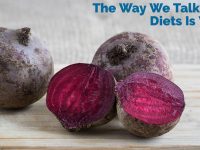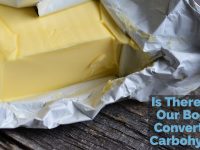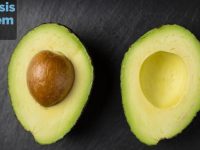[This is an edited reprint of a post I did for another blog I ran a few years back. I’ve seen vitamin K (and K2) popping up around the news again, so I thought it might be a good time to put this article out again, especially since we’ve been talking about micronutrients anyway!]
Vitamin K is not as simple as it may seem. We only measure total vitamin K, but the vitamin can really be divided into multiple forms with multiple functions. Vitamin K1 is not the same as vitamin K2—they have different structures and different purposes—so it can seem like a gross oversight to measure them under the same category. Some individuals have decided that this means we have a discrete need for both, and that we should either supplement with vitamin K2 or alter our diet to get enough. They’re wrong, though; there’s a legitimate reason why we consider them together and not separate.
Vitamin K1 and K2 Are Different, but End Up the Same
In terms of human health, there are two important forms of vitamin K: K1 and K2. We get vitamin K1 from plants and vitamin K2 from bacteria and animals.
Vitamin K1 has but a single form known as phylloquinone, but Vitamin K2 is actually comprised a group of compounds (menaquinones) with different chemical tail lengths. Different foods contain different types of vitamin K2, but our body only appears to use a single type of K2 called menaquinone-4 or MK-4 for short. All other forms of vitamin K2 (collectively known as MK-n) must be converted into MK-4 to affect our health.
At times, we find vitamin K2 in the spotlight as an important nutrient for bone health. And it’s true biologically that vitamin K2 is important for bone health—but that doesn’t mean anyone needs to go out of their way to find it or consume it.
For example, there’s a hypothesis that eating more grass-fed animal products will improve our intake of vitamin K2. It seems reasonable enough—animals convert the vitamin K1 they get from grass into vitamin K2, so animals who eat more grass should have higher vitamin K2 levels. The problem is, we don’t actually know whether this is true because there has never been a single study done to assess the difference in vitamin K2 levels between grass-fed and grain-fed meats; it’s premature to make this claim.
What we do know is that vitamin K turns over rapidly (around once every 1.5 days),1 which means that any vitamin K2 the animals gained from munching grass in a sunny field would be gone in less than half a week if switched off a grass-fed diet. Moreover, it means we could mimic the effects of pasturing animals by giving them a diet high in vitamin K just before slaughter. This, at least, is true: commercial chicken meat is one of the richest sources of vitamin K2 (in the MK-4 form) because we feed those chickens a vitamin K supplement that they subsequently convert to vitamin K2.
This is all aside from the real point, though, which is that we really don’t need to get vitamin K2 from our diet at all. Instead, we merely need to get vitamin K in general, which we can then convert into vitamin K2. This vitamin K can be 100% phylloquinone or 100% menaquinone (of any tail length) or a mixture, because once we absorb it our body will convert it to the bioactive menaquinone-4 form, just as cows grazing upon grassy fields convert the phylloquinone in the same way.2,3,4,5,6,7,8
[Quick Aside: No study that I am aware of has shown vitamin K1 to K2 conversion in humans; however, animals as different as rats and chickens use the same pathway, so it likely exists in humans as well. Humans accumulate vitamin K2 in the exact same tissues as rats, and in rats it has been shown that it accumulates in those tissues because those are the tissues converting vitamin K1 to K2. Thus, even though no study has demonstrated vitamin K conversion in humans, it’s reasonable to assume it happens.]
This means that vitamin K2 is, at best, conditionally essential. We need it for bone health, but we can make it ourselves as long as we get enough vitamin K1 (or MK-7, or MK-9, or whatever).
Our body only uses a single type of vitamin K2—MK-4.8,9 All vitamin K ends up as MK-4, whether we get it as vitamin K1 or vitamin K2. The MK-4 form of vitamin K is barely found in our diet: an egg yolk contains about 5.5 micrograms, meat typically contains less than 5 micrograms, and dairy products contain about 2 to 3 micrograms per serving.10,11 Compare this to the 1,062 micrograms we get from a cup of cooked kale.11
Fermented foods and animal products may contain higher amounts of other types of vitamin K2—mostly MK-7, MK-8, and MK-9—10 but these long-tailed vitamin K2s must be converted to MK-4 just the same as vitamin K1.9
Now, these vitamin K2s stick around in our blood longer,12 so we might get more opportunity to convert them to bioactive MK-4. But then again, the opposite could also be true—perhaps they stick around longer because they don’t get converted well (i.e., they aren’t being taken up to be converted), and therefore aren’t so beneficial for bone health. At the end of the day, it’s probably inconsequential, if academically interesting; as long as your overall vitamin K intake is adequate, it won’t make a difference either way.
Don’t Worry About the Differences Between Vitamers for K
The scientists who determine how much vitamin K the average human needs are well-aware of the research on how vitamin K1 and K2 differ. When they decided not to measure vitamin K1 separately from vitamin K2, it was based on all the research available, which includes research suggesting humans convert vitamin K1 into K2 in the amounts they need—provided total vitamin K intake is adequate.
It could turn out that vitamin K2 is an important dietary nutrient, or has greater or different activity than vitamin K1, kind of like how the carotenoids serve health-related functions aside from their ability to be converted into vitamin A. We don’t have any evidence that suggests this, though, so it’s premature to say we should be eating more vitamin K2 specifically or buying supplements, at least as long as your dietary intake of vitamin K is adequate (which it probably is; vitamin K deficiency is extremely rare).















Hi! Thank you for this article. I have seen a lot of articles online touting the benefits of k2 specifically. Many have linked to studies showing beneficial effects from supplementation and consumption of k2. I am having trouble understanding why these studies show beneficial effects with higher k2 consumption if k1 is converted efficiently.
Much of the advice I have seen points to benefits with levels of k2 that I would find hard to obtain in the diet. For example, 3 oz of cheese is not something I would regularly consume in a day – let alone picking and choosing high k2 varieties.
Any input you might have would be appreciated.
Thanks!